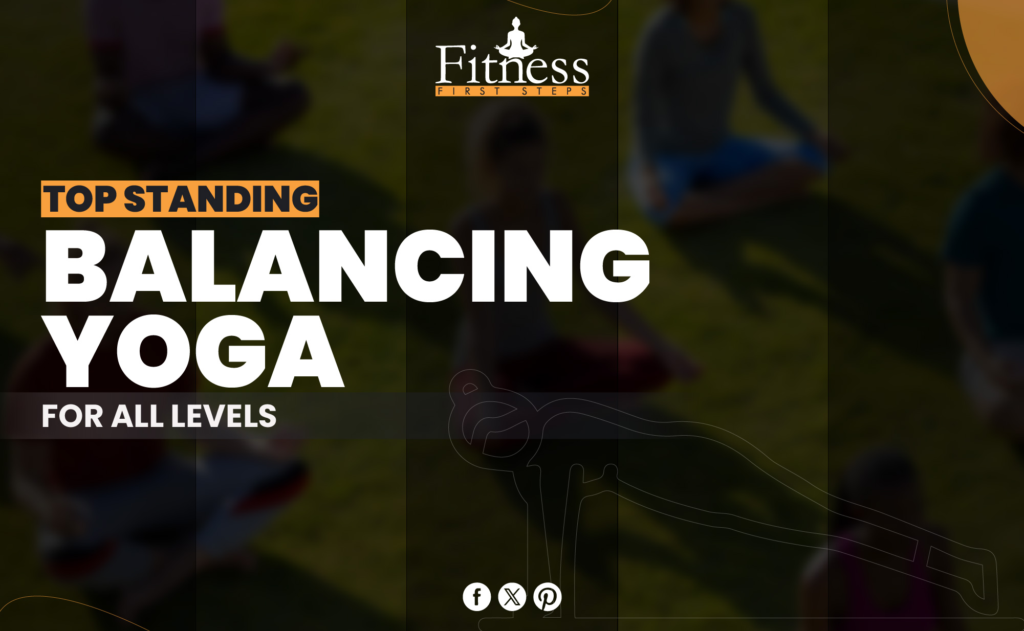Introduction
Yogic science, a comprehensive field with roots in ancient India, includes physical, mental, and spiritual techniques for bringing the body and mind into harmony. Tucked down in a thousands-year-old custom, it guides leading a happy, healthy existence.
These days, people who practice yogic science need to know both the pros and cons of the science behind it. It helps them go into practice with clear goals and fair expectations, which is good for their personal growth and well-being.
This paper will discuss the pros and cons of incorporating yogic practices into daily life. This study will help readers understand how yogic science can be used in modern life to improve health and awareness.
You’ll be able to read more about Yoga Journal.
The Pros of Yogic Science
Physical Health Benefits
- Improved flexibility, strength, and balance: Regular yoga practice makes the body more flexible, which is essential for the health of the joint system. It also makes you stronger, which helps your stance and balance.
- Alleviation of chronic pain and tension: By easing muscle tightness and promoting relaxation, yoga can help with many types of chronic pain, such as headaches, lower back pain, and arthritis.
- Enhanced respiratory health: Pranayama (breath control) techniques in yoga can boost lung capacity and respiratory system efficiency. This increases stamina and oxygenates tissues.
- Boosted immune system: Regular yoga boosts immunity. Through stress reduction and a better lifestyle, yoga strengthens the body’s inherent defenses against sickness.
Mental Well-being
- Stress reduction and relaxation: Yoga successfully lowers tension and encourages relaxation through meditation and controlled breathing exercises.
- Enhanced focus, clarity, and mindfulness: Yoga promotes mindfulness, aiding concentration, mental clarity, and present-moment awareness.
- Improved mood and emotional health: Serotonin, sometimes known as the happiness hormone, rises with yoga practice and helps to combat emotions of anxiety and despair.
- Better sleep quality: By teaching stress-reduction and relaxation strategies, yoga promotes better sleep patterns. Often, practitioners say they go to bed faster, sleep more comfortably, and wake up feeling more rested.
Spiritual Growth
- Deepening of self-awareness and introspection: Yoga helps one become more conscious of their inner self, which promotes personal development and self-discovery.
- Connection to a higher sense of purpose or spirituality: Many people discover that yoga deepens their spiritual connection, which enhances their feeling of meaning and involvement in life.
- Cultivation of mindfulness and presence: Yoga helps people live in the present, lowering stress and improving daily living. Mindfulness brings calm and contentment.
- Enhanced capacity for compassion and empathy: Yoga promotes kindness and compassion by deepening understanding and connection. This improves personal ties and fosters community.
Accessibility and Adaptability
Yoga is beautiful because it can be used by people of all ages, fitness levels, and skills. Because it is so flexible, anyone can benefit from yogic science by making the practice fit their wants and situations.
Inclusivity across ages, fitness levels, and abilities
Yoga welcomes all ages, abilities, and physical restrictions, offering a variety of techniques and adjustments. Its non-competitive character promotes personal growth and well-being over performance, making it accessible and helpful to everybody.
Adaptability to various lifestyles and schedules
A significant benefit of yoga is its adaptability to any lifestyle or schedule. Yoga may be tailored to any individual’s time and tastes, whether it’s a 90-minute studio session, a 20-minute home practice, or brief desk stretches. Its versatility has made it famous and part of daily life.
Wide range of practices catering to individual preferences
Yoga ranges from Vinyasa and power yoga’s physically demanding asanas to Hatha’s soothing movements and Yin’s stillness. This variation allows people to select the style that suits their fitness, emotional, and spiritual goals. There are also meditation and pranayama pathways for mental and spiritual advantages.
Holistic Approach to Health
Yoga takes a whole-person approach to health and fitness, seeing each person as a whole system with physical, mental, emotional, and spiritual parts. This all-encompassing view shows how to find balance and peace within oneself and the world.
Integration of physical postures (asanas), breathing techniques (pranayama), and meditation
Together, asanas, breathing, and meditation form the basis of yoga. Combining these three things improves physical health, keeps the energy flowing smoothly, and promotes mental peace and focus. Such integration leads to a more mindful and caring approach to health by helping people better understand the link between the body and mind.
Emphasis on holistic well-being: physical, mental, emotional, and spiritual
Yogic science stresses self-care in all areas. Through its practices, people can gain physical health, mental balance, emotional resilience, and spirituality. This holistic approach improves overall health and well-being, making yoga a powerful instrument for personal transformation and healing.
Promotion of self-care and self-healing practices
Self-care and self-healing are central to yoga. Practitioners should investigate their bodies and brains to create a practice that fits their requirements. Yoga promotes preventive care and the body’s ability to recover by teaching self-awareness and self-compassion.
Cultivation of Discipline and Mindfulness
Yogic science is a lifelong practice that promotes attention and presence. Yoga improves personal and professional relationships and lifestyle choices by instilling discipline in daily life.
Development of discipline through regular practice
Regular yoga practice builds mental and physical discipline. Consistent practice teaches perseverance, patience, and dedication. Despite life’s problems, showing up for oneself generates strength and resilience that supports other aspects of life and encourages well-being and success habits and routines.
Cultivation of mindfulness and present-moment awareness
Yogic science promotes mindfulness—being present. Focused breathing and mindful movement increase body, mind, and emotion awareness. This awareness brings clarity and tranquility, allowing for more thoughtful reactions and decisions in daily life, lowering stress and improving quality of life.
Transferability of yogic principles to daily life and relationships
Yoganic science principles like mindfulness, empathy, and non-attachment help you navigate life and relationships. Off the mat, these ideas can help people balance problems, improve relationships, and comprehend others. This holistic approach improves personal life and creates a more sympathetic community.
The Cons of Yogic Science
There are many good things about yogic science practice, but some significant problems need to be discussed to get a fair view.
Physical Risks and Limitations
- Potential for injury without proper guidance: People say that yogic science is good for you, but you could hurt yourself or strain yourself if you don’t know the right way to do poses and methods. This is especially true for beginners or people who try advanced poses without enough practice or professional guidance.
- Not suitable for individuals with certain medical conditions: Some types of yoga may not suit people with specific health problems. For instance, high-intensity yoga types may be dangerous for people with heart problems or high blood pressure. This shows how important it is to talk to a doctor before starting.
- Accessibility challenges for people with mobility issues: Some yoga poses demand physical flexibility and movement, which may be difficult for people with disabilities or chronic pain. This constraint may prevent these people from participating in yoga altogether, denying them some benefits.
- Aggravation of pre-existing injuries: Yoga can aggravate pre-existing injuries without sufficient adaptation or understanding of one’s limitations. Listening to one’s body and practicing mindfully and cautiously is especially important for those who push themselves too hard to reach specific postures.
Cultural Appropriation and Commercialization
- Misrepresentation and commodification of yogic traditions: Yogic science has become commercialized due to its widespread popularity, frequently separating it from its spiritual and cultural foundations. Because of this economic component, yoga may be understood and portrayed superficially, losing its depth and significance.
- Lack of respect for the cultural origins and spiritual significance: The adoption of yogic science in Western societies has occasionally overlooked the practice’s rich history and spiritual importance, reducing it to simple exercise or a fashionable lifestyle choice and upsetting others who regard it as a hallowed heritage.
- Dilution of traditional practices: Traditional yoga methods have been diluted when they are adapted to diverse markets. Meditation and breath work, essential to yoga’s holistic approach, are often neglected in favor of more physically demanding practices, reducing its depth.
- Economic disparities in access: Yoga is profitable and trendy, prompting challenges about access and diversity. High-class fees and yoga accessories make it less accessible to economically disadvantaged people, violating yoga’s egalitarian roots.
Misleading Claims and Pseudo-science
- Exaggerated health claims without scientific evidence: Like many wellness movements, the yoga business sometimes makes big health claims not backed up by science. This could lead people who do yoga to get a different idea about its benefits and abilities.
- Confusion between traditional practices and modern interpretations: When traditional yogic practices are mixed with modern exercise routines, it can be hard to tell which ones are real and which work. This could dilute the spirit and benefits of traditional yoga.
- Overemphasis on physical aspects leading to neglect of mental and spiritual growth: Modern yoga sometimes only cares about how you look and how fit you are instead of the essential mental and spiritual benefits. This can keep people from getting the full benefits of yoga, like better mental health and spiritual understanding.
- Proliferation of unqualified instructors: Yoga instructors who lack training or knowledge of yogic science have increased due to the surge. This can spread false practices and ideologies, damaging students and undermining yoga’s reputation as a holistic well-being system.
Dependency on External Teachers and Gurus
Seeking information and direction from teachers or gurus is a standard part of the yoga practice path. This has specific hazards and factors that practitioners must be aware of, even if it can be helpful.
Reliance on external authority figures for guidance and validation
Yoga, especially spiritual yoga, sometimes requires experienced teachers or gurus. This reliance can lead to dependency when the practitioner’s feeling of progress or validation is tied to an external authority, impeding personal autonomy and inner growth.
Potential for cult-like behavior and manipulation
Charismatic yoga teachers can manipulate and cultize. This dynamic can push practitioners, either quietly or blatantly, to make decisions against their interests or adopt views without conviction, undermining yoga’s purpose of self-discovery and release.
Importance of discernment and critical thinking in seeking guidance
Balancing the teacher-student relationship in yoga requires discretion and critical thought. Practitioners must value and trust their intuition and experiences, even when seeking external help. They can establish a healthy and empowering relationship with their teachers, making their yoga practice a personal and meaningful exercise in self-awareness and growth.
Time and Commitment Required
Yoga requires dedication and consistency to generate results. Deepening one’s yoga practice requires mindfulness, discipline, and yogic philosophy. Yoga becomes a lifestyle rather than a hobby when people make time for it in their daily activities.
Dedication and consistency are needed for tangible benefits
Yoga requires a consistent practice to get its many advantages, from mental clarity to physical flexibility. Regular yoga practice improves asana skills and spiritual and mental health. Dedication and consistency are essential to making practice a personal growth tool.
Balancing practice with other life commitments
Practicing yoga regularly in a hectic life is difficult for many. It involves careful scheduling and prioritization to balance job, family, and other personal obligations with yoga. Maintaining a sustained practice that doesn’t burden daily living requires this balance.
Patience and perseverance in overcoming challenges and plateaus
Yoga progresses and stagnates. Physical plateaus are where particular postures or methods appear impossible, and mental blockages are where motivation wanes may occur. These situations make patience and tenacity crucial. Understanding that growth generally comes from overcoming hurdles keeps practitioners committed and resilient.
Conclusion
Yoga combines physical activities, spiritual growth, and mental discipline for well-being. There are hurdles, but it improves physical health, mental clarity, and emotional equilibrium. Commercialization, cultural appropriation, and false health claims can degrade yoga. External teachers can also lead to dependency and manipulation, and the dedication necessary might be overwhelming.
Yogic science practitioners should be mindful and discernible. Individuals can maintain their yoga practice by critically analyzing their education sources and being aware of commercialization and cultural misappropriation. Choose prudently, looking for teachers who appreciate student liberty and personal growth.
Despite its drawbacks, yogic science has many benefits. Yoga transforms with patience, perseverance, and a willingness to learn. Yoga is a personal journey that can improve one’s quality of life when performed with intention and respect, encouraging a balanced and enriched practice.




